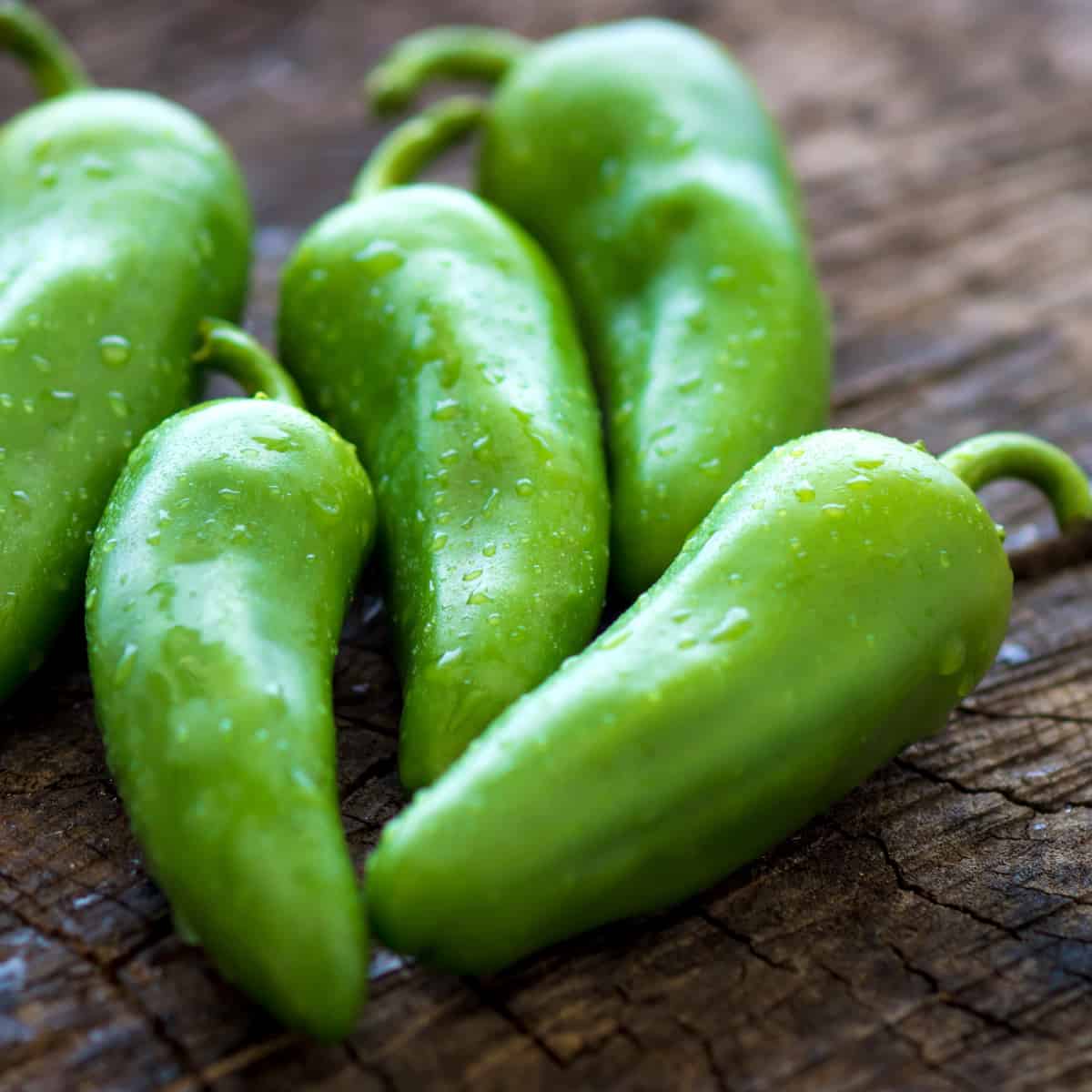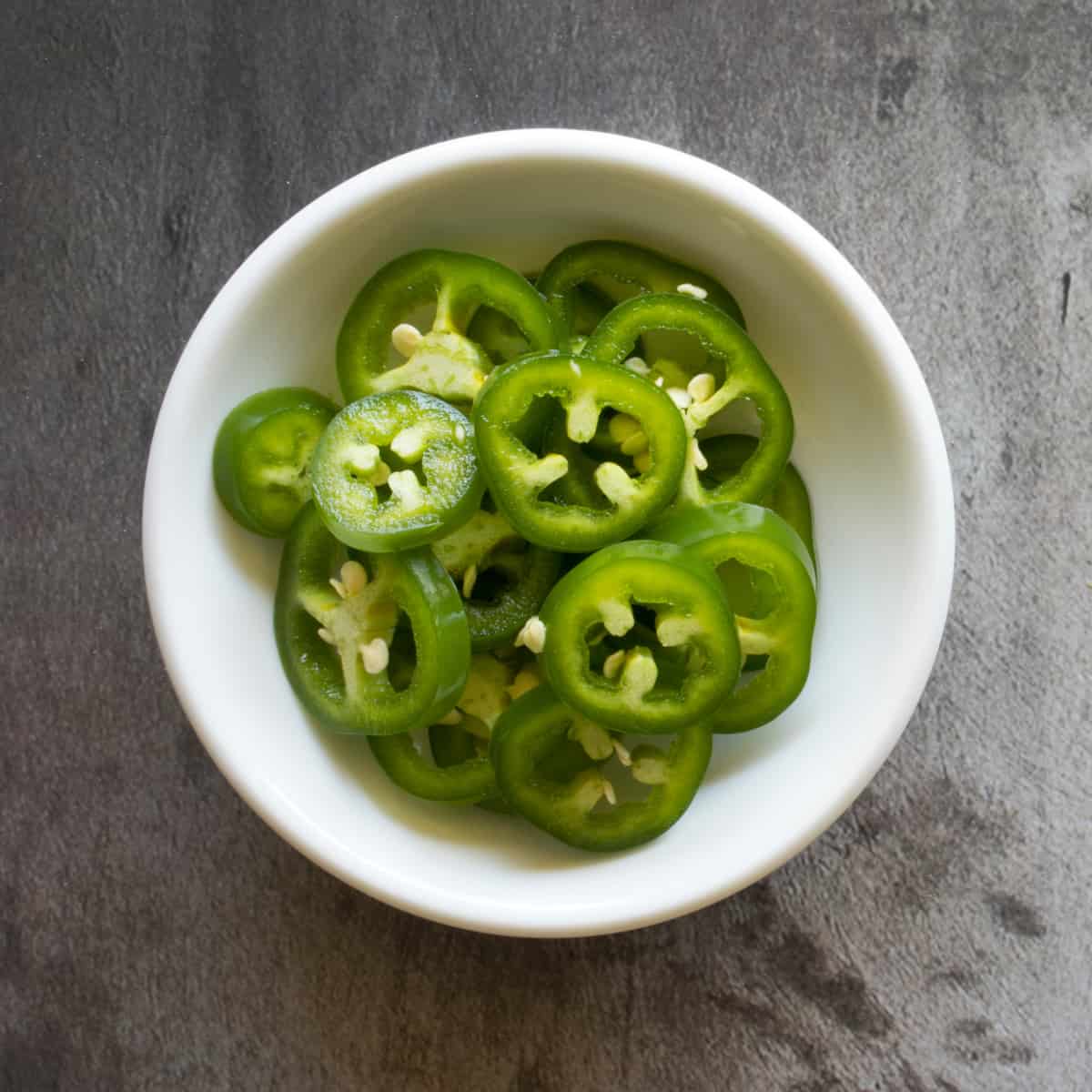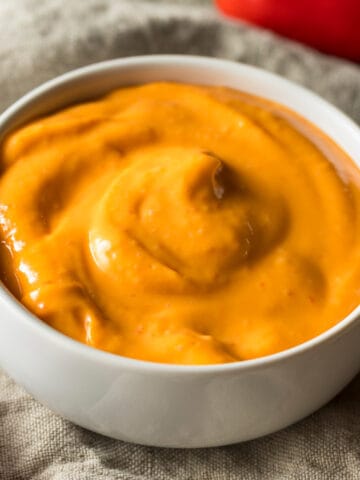Chili pepper vs jalapeno? Chili and jalapeno peppers are two of the most popular hot pepper varieties in the culinary world. Their intense heat, distinctive flavors, and vibrant colors have made them popular in many spicy cuisines around the globe. Readily available in virtually every local grocery store, these peppers are favorites of people who love spicy food. While often used interchangeably, jalapeno peppers and chili peppers are not the same. Many differences between them make them unique.

Jump To
It's time to settle the debate once and for all about the difference between jalapenos and chili peppers! In this blog post, I'll explain the differences between these two popular peppers, discuss their unique flavors, and explain which one is hotter.
What is a chili pepper?
Chili peppers are a diverse family of peppers that originate from different parts of the world. With a history stretching back thousands of years, these peppers are used in a wide range of cuisines. From the fiery habanero in the Caribbean to the smoky chipotle in Mexico and the pungent Thai bird’s eye chili, the most popular hot peppers come in a variety of shapes, sizes, and heat levels. Their role in culinary traditions is as varied as their origins and adds depth and character to various dishes across continents.
What is a jalapeno pepper?
Originating in Mexico, the jalapeno pepper has a rich history in Mexican cuisine. These vibrant green peppers are named after the city of Jalapa – a Mexican state. They have a deep cultural significance as they are a main ingredient in a wide variety of dishes. With a moderate heat level, red jalapenos complement the dish without overwhelming the palate. Their popularity extends beyond Mexico. They are commonly featured in Tex-Mex dishes and widely used in international restaurants.
The unique taste of chili peppers and jalapenos
Chili peppers and jalapenos vary in taste depending on their variety and ripeness. Here are descriptions of an overview of the taste of chili peppers and the taste of jalapenos:
Chili peppers
Chili peppers encompass a wide range of varieties, each with its unique flavor profile and heat level. Here are some common characteristics:
Heat Level: Chili peppers vary widely in heat, from mild to extremely hot. The Scoville Heat Scale is commonly used to measure their heat. For example, the mild Anaheim pepper typically has a lower heat level (500 to 2,500 SHU), while the super-hot Carolina Reaper can exceed 2,000,000 SHU.

Flavor: The flavor of chili peppers is diverse and goes beyond just heat. Different varieties have distinct taste profiles. For instance: Habanero peppers are known for their fruity and floral notes. Chipotle peppers are smoked and have a rich, smoky taste. Poblano peppers have an earthy, mildly spicy flavor. Cayenne peppers are often described as having a bright, slightly tangy taste.
Aroma: The aroma of chili peppers can be as varied as their flavors. Smoked varieties like chipotle have a smoky aroma, while others may have a fresh, peppery scent.
Cultural significance: Chili peppers are essential ingredients in many global cuisines, including Mexican, Thai, Indian, and Southwestern American. They add not only heat but also depth of flavor to a wide range of dishes.
The specific taste of a chili pepper can vary based on factors such as variety, ripeness, and preparation. Experimenting with different types of chili peppers can introduce exciting and unique flavors to your cooking.
Jalapenos
Heat Level: Jalapenos are known for their moderate heat. On the Scoville Heat Scale, they typically range from 2,500 to 8,000 Scoville Heat Units (SHU), but this can vary.
Flavor: Jalapenos offer a unique balance of heat and flavor. They have a slightly grassy or earthy taste with a hint of sweetness. When they ripen and turn red, they become sweeter and slightly fruitier. The heat is relatively mild but can still provide a noticeable kick.

Aroma: Fresh jalapenos have a distinct, fresh, and slightly peppery aroma. This aroma is often released when you cut into a jalapeño pepper.
Versatility: Jalapenos are versatile and commonly used in various dishes, including salsas, guacamole, stuffed peppers, and as a topping for nachos, burgers, and tacos. Their moderate heat level makes them accessible to a wide range of taste preferences.
Chili pepper vs jalapeno – key differences
There are several major differences between jalapeno and chili peppers. Understanding the differences will help you choose the right option that suits your preferences. The following are the primary aspects that highlight their differences:
Size and shape
The size and shape are the most noticeable differences between jalapenos and chili peppers. Jalapenos are relatively smaller and generally feature a cylindrical or slightly curved shape. They measure around 2-4 inches in length. In contrast, chili peppers can vary widely in size. The most popular varieties, e.g., bell peppers, green chiles, etc., range from 3 to 7 inches long.
Color
Jalapenos start as bright green peppers and gradually mature to a deeper red hue. Chili peppers, on the other hand, have a broader spectrum of colors. Depending on the type of chili pepper, the colors include red, orange, yellow, and even brown and purple.
Flavor
Jalapeno peppers have a well-rounded, unique flavor profile that features a subtle sweetness and milder heat level. Green chili peppers have a more diverse range of flavors. The flavor profiles can range from fruity and smoky to extremely spicy.
Heat level
This is the main difference between the two ingredients. The heat level of peppers is measured on the Scoville Heat Scale. On the Scoville Scale, the typical Scoville rating of jalapenos is between 2,500 and 8,000 as compared to chili peppers, which can vary significantly in spice level. Mild chili pepper varieties, e.g., poblano peppers, etc., have 1,000 to 1,500 SHU, while their hottest pepper varieties, like habanero peppers, can have 100,000 to 350,000 Scoville Units.
Culinary uses
Both jalapeno and chilli pepper contribute their distinct characteristics to a wide array of dishes. You can use red jalapenos in salsas, pickled dishes, and toppings for various spicy foods. Hot chile peppers, including cayenne peppers, are used in virtually everything from stews and curries to hot sauces and spice blends. They provide a spicy kick to all kinds of dishes. Both green jalapeño and red pepper have a role beyond enhancing flavor. They add different colors to dishes and make them visually appealing and enticing. Their versatile nature makes them ideal ingredients to be added to food presentations, garnishes, and condiments.
Nutrition and health benefits
Both jalapeno and hot chili pepper offer many health benefits because of their high amount of capsaicin content, which is popular for its potential to boost metabolism and reduce inflammation. These peppers are rich in nutritional content like vitamins, particularly vitamin C, and provide a source of antioxidants that promote overall well-being.
Growing conditions
Jalapeno pepper plants thrive in warm climates and are often cultivated in home gardens and commercial farms. On the other hand, chili peppers have different growing conditions that vary based on their varieties. They are adaptable to many environments.
Ideas for cooking with chili peppers and jalapenos
Cooking with chili peppers and jalapenos can add exciting flavor and heat to a wide range of dishes. Here are some ideas for incorporating these peppers into your cooking:
Salsas
Dice jalapenos or other chili peppers and mix them into fresh salsa for a spicy kick. Serve with tortilla chips, tacos, grilled meats, or fish.

Stuffed peppers
Hollow out larger chili peppers like poblanos or bell peppers and stuff them with a mixture of cheese, rice, beans, and spices. Bake until tender for a delicious and spicy entrée.
Hot sauces
Create your homemade hot sauce using a blend of chili peppers, vinegar, garlic, and spices. Customize the heat level to your liking.
Spicy guacamole
Add finely chopped jalapeños or serrano peppers to your guacamole for a zesty twist. It pairs well with tortilla chips, tacos, or as a topping for grilled chicken.
Chili
Incorporate various chili peppers into your chili recipe to intensify the heat and flavor. Experiment with combinations like ancho, chipotle, and jalapeno peppers.
Stir-fries
Slice chili peppers thinly and toss them into stir-fry dishes for a spicy and vibrant kick. They work well with chicken, beef, shrimp, or tofu stir-fries.
Ceviche
Add finely chopped chili peppers to your ceviche for a burst of flavor and heat. They pair especially well with citrusy and seafood-based ceviche recipes.
Chili oil
Make your chili oil by infusing oil with dried chili peppers, garlic, and spices. Drizzle it over noodles, dumplings, or stir-fried dishes for added flavor and heat.
Taco toppings
Offer a selection of sliced chili peppers as a taco topping along with other classic ingredients like lettuce, tomatoes, and cheese.
Pasta dishes
Chop jalapenos or chili peppers and add them to pasta sauces for an unexpected kick. They can enhance both tomato-based and creamy pasta dishes.
Sides and appetizers
Roast chili peppers and serve them as a side dish or appetizer. You can stuff them with cheese, wrap them in bacon, or drizzle them with olive oil.
Sauces and marinades
Incorporate finely chopped or blended chili peppers into sauces and marinades for grilled meats, seafood, or vegetables.
Spicy soups
Enhance the flavor of soups and stews by adding diced chili peppers. They work well in chicken soup, chili, and pozole.
Pickled peppers
Make your pickled peppers by preserving jalapenos or other chili peppers in vinegar and spices. Use them as condiments or toppings.
Remember that the heat level can vary among chili pepper varieties, so be mindful of your spice tolerance when adding them to dishes. Always wash your hands thoroughly after handling chili peppers, especially if you touch your face, and consider using gloves to avoid contact with the oils, which can cause skin irritation.
Chili pepper vs jalapeno: final thoughts
Chili peppers and jalapenos are two popular peppers that have many similarities but also some significant differences in flavor, heat and uses. Overall, both jalapenos and chili peppers have their significance in spicy recipes around the world. While jalapenos offer a balanced heat and cultural significance rooted in Mexican dishes and Tex-Mex cuisine, chili peppers offer a variety of flavors and heat levels, allowing cooks to create unique taste experiences. The choice between these two options depends on your desired level of spiciness and personal preference. No matter which option you choose, you will add depth and complexity to your dish. Are you Team Jalapeno or Team Chili pepper? Let me know in the comments below, and let the debate continue! 🙂

















Leave a Reply